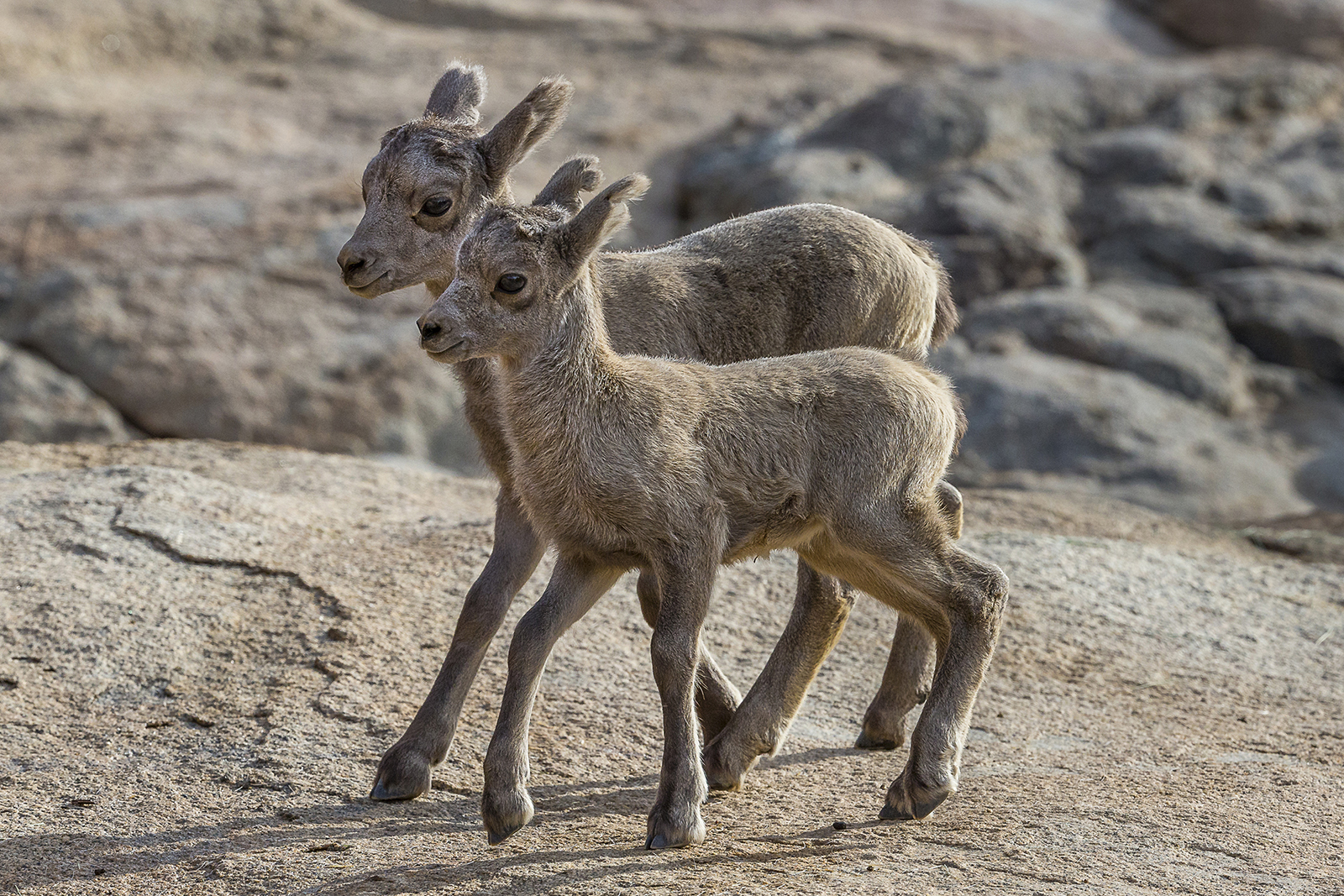Desert Bighorn Sheep Lambs Jump, Climb and Explore Their Habitat at San Diego Zoo Safari Park
Two desert bighorn sheep lambs showed off their climbing and jumping abilities, as well as their playful head-butting behavior, earlier today (April 6, 2017) at the San Diego Zoo Safari Park. The two female lambs were born to different mothers in the Safari Park’s bighorn sheep habitat at Condor Ridge on March 19 and March 25.
“We are thrilled to welcome these lambs to the bighorn herd, as they are important to the genetic population of bighorn sheep,” stated Karla Nielsen, keeper, San Diego Zoo Safari Park. “These little girls are thriving. They are nursing well and, within a few days of their birth, were climbing, jumping and running around their exhibit. They’re able to be very sure-footed on the rough terrain in their habitat, as their outer hooves are shaped to snag and grab onto rocky surfaces—and the bottom of each foot is soft, giving them the ability to grip.”
Bighorn sheep are found in dry, desert mountain ranges of California, Nevada, Arizona, New Mexico, Utah, Colorado and Mexico. Desert bighorn sheep inhabit rocky slopes and cliffs, canyons and washes, and they use their climbing ability and excellent vision to detect and escape from predators.
The most prominent feature of desert bighorn sheep is their large brown horns, which continue to grow throughout their lives. Both male and female sheep have horns, but the males’ are much larger and will generally grow into a curve.

Peninsular bighorn sheep are listed as Endangered and are protected under the federal Endangered Species Act, administered by the U.S. Fish and Wildlife Service. Their numbers have dropped over the past few decades due to competition from domestic animals for water and food, habitat fragmentation, disease and poaching.
San Diego Zoo Global is doing its part to conserve the species by working with its partners to study bighorn sheep populations in northern Baja California, Mexico. Using GPS telemetry, Population Sustainability and Recovery Ecology researchers are collecting detailed data on movement patterns that will indicate the most important movement corridors and habitat features that need to be protected for bighorn sheep populations. Conservation Genetics researchers are using fecal pellets from wild bighorn sheep to obtain genetic profiles for population structure and connectivity analyses and Disease Investigation team members are examining the health status of bighorn sheep in the Sierra Juarez region, just south of the U.S./Mexico border. For more information on this important conservation project, go here. Visitors to the Safari Park may see the bighorn sheep lambs, ewes and ram in their habitat at Condor Ridge.





